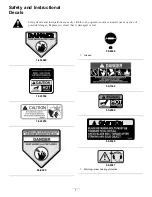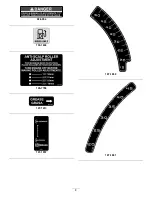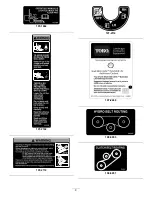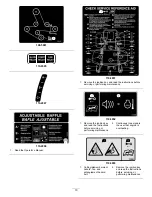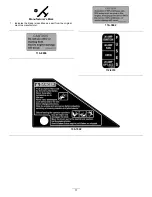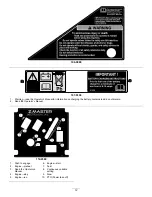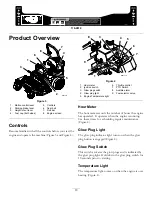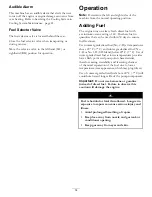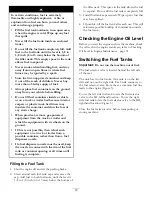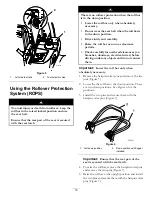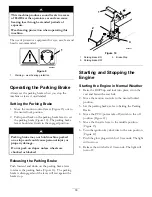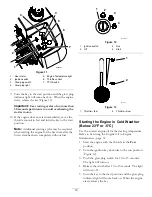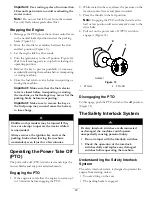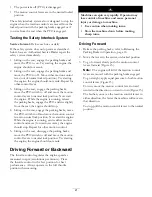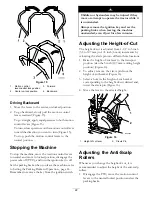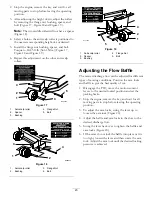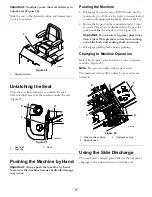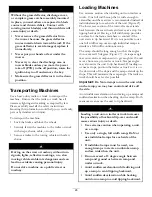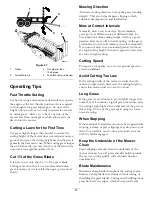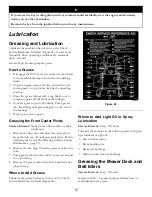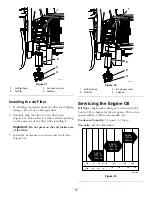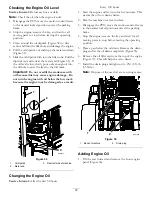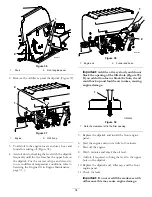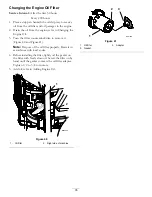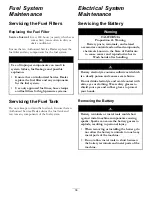
•
The power take off (PTO) is disengaged.
•
The motion control levers are in the neutral locked
position
The safety interlock system also is designed to stop the
engine when the traction controls are moved from the
locked position with the parking brake engaged or if
you rise from the seat when the PTO is engaged.
Testing the Safety Interlock System
Service Interval:
Before each use or daily
If the safety system does not operate as described
below, have an Authorized Service Dealer repair the
safety system immediately.
1. Sitting on the seat, engage the parking brake and
move the PTO to on. Try starting the engine; the
engine should not crank.
2. Sitting on the seat, engage the parking brake and
move the PTO to off. Move either motion control
lever (out of neutral locked position). Try starting
the engine; the engine should not crank. Repeat for
other control lever.
3. Sitting on the seat, engage the parking brake,
move the PTO switch to off and move the motion
control levers to neutral lock position. Now start
the engine. While the engine is running, release
the parking brake, engage the PTO and rise slightly
from the seat; the engine should stop.
4. Sitting on the seat, engage the parking brake, move
the PTO switch to off and move the motion control
levers to neutral lock position. Now start the engine.
While the engine is running, center either motion
control and move (forward or reverse); the engine
should stop. Repeat for other motion control.
5. Sitting on the seat, disengage the parking brake,
move the PTO switch to off and move the motion
control levers to neutral lock position. Try starting
the engine; the engine should not crank.
Driving Forward or Backward
The throttle control regulates the engine speed as
measured in rpm (revolutions per minute). Place
the throttle control in the fast position for best
performance. Always operate in the full throttle
position when mowing.
Machine can spin very rapidly. Operator may
lose control of machine and cause personal
injury or damage to machine.
•
Use caution when making turns.
•
Slow the machine down before making
sharp turns.
Driving Forward
1. Release the parking brake; refer to Releasing the
Parking Brake in Operation , page 14.
2. Move the levers to the center, un-locked position.
3. To go forward, slowly push the motion control
levers forward (Figure 15).
Note:
The engine will kill if the traction control
levers are moved with the parking brake engaged.
To go straight, apply equal pressure to both motion
control levers (Figure 15).
To turn, move the motion control lever toward
neutral in the direction you want to turn (Figure 15).
The farther you move the traction control levers in
either direction, the faster the machine will move in
that direction.
To stop, pull the motion control levers to the neutral
position.
21

